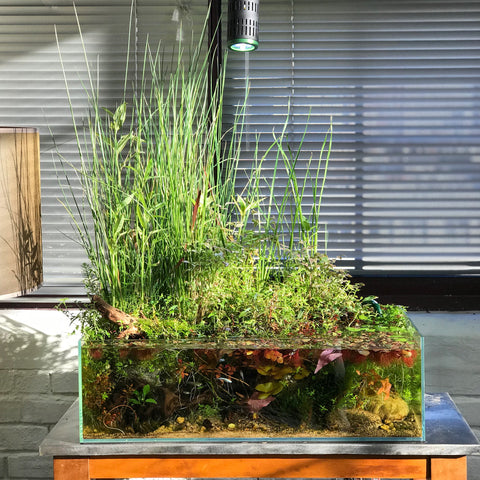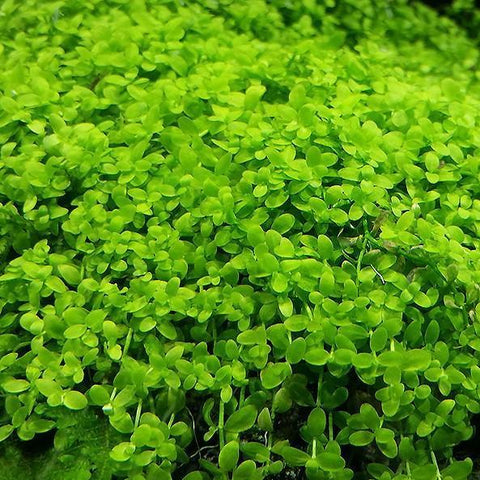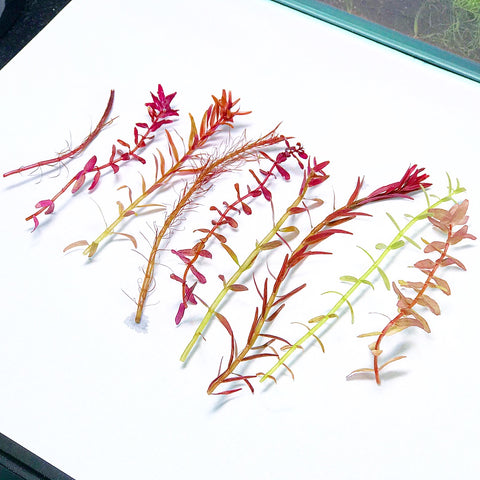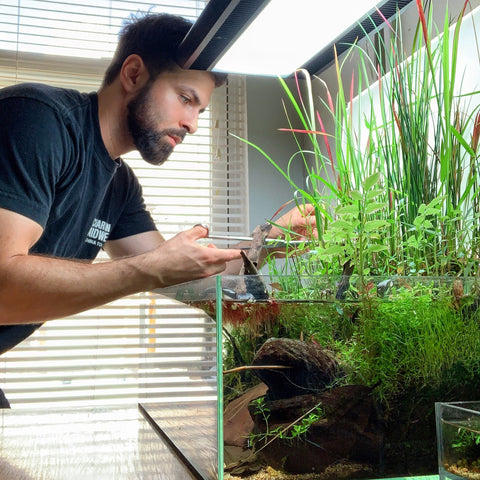Best Plants to Grow Submerged AND Emersed
by: Chris (@shrimpery)
If you keep up with aquascaping on social media, you’ve probably noticed the growing trend of aquariums featuring both submerged and emergent growth.
The addition of emergent growth allows the aquarium to better interact with its environment. Just like a houseplant, the emergent leaves provide a nice presence to the room. Not all emergent plants are alike, though; some plants are uniquely suited to adapt to any condition you throw at them.
Here is a quick guide to selecting specific plants that will thrive both above and below the water.

Obligate emergent plants, such as white top star rush or water celery, only thrive in conditions where their roots are submerged, with their leaves above the water. In contrast, obligate aquatic plants, such as Blyxa and hornwort, can only survive below the surface.
What many hobbyists don’t realize, however, is that a majority of plants that we use in our aquascapes (especially high-tech aquascapes utilizing CO2) are amphibians, meaning they can live partly in water and partly on land.
Plants like Rotala (pictured above), Ludwigia, and Micranthemum have multiple “forms” that they can take depending on the environment in which they find themselves: immersed or emersed.
You have probably already heard the term immersed (meaning found underwater); the term “emersed” refers to a plant that has grown up out of the water from below the surface of the water.

Some plants, like Micranthemum “Monte Carlo,” in the picture above, look similar above and below the surface. Monte Carlo looks incredible as a lush green carpet above and below the water’s surface.
Other plants can appear so different that it is difficult to identify them as the same plant. For example, if you are only familiar with its underwater form, Rotala Rotundifolia has a strange name; Rotundifolia means round leaves, but the underwater form of the plant has colorful, pointed, narrow leaves and unstructured stems that become limp when removed from the water. In contrast, its emersed form has waxy, shiny, round green leaves, with a more structured, spongy stem.
Keeping all of this in mind, there are several ways to take advantage of the dimorphism that many common aquascaping plants display. For instance, under bright lighting conditions, you can simply allow most stem plants to reach the surface, at which point they will begin piling up on each other and growing up out of the water. If used in this manner, a mound of emersed stem tips can look like a small island in the back of the tank.
- Some great plants for this purpose include Rotala H’ra, Nesaea Pedicellata Golden, and Ludwigia Palustris.
An alternative strategy is to use a particular plant in multiple portions of a tank with a “dry land” section. For example, Sphaerocaryum Malaccense looks great both submerged underwater and planted directly in moist soil- blending together and creating a transitional appearance as the substrate slopes upward. If trimmed correctly, it can even form a “bush in the water” appearance.
Any aquarium moss, such as Christmas Moss or Java Moss is also well suited for this purpose, especially if placed on hardscape such as rocks or driftwood throughout your aquascape.
- Note: Mosses especially need to be kept at a very high humidity when emersed.
I hope that this post has inspired you to explore using some of your old favorite aquarium plants in a new context or discover novel uses for plants you previously didn’t consider. When brainstorming options for a new scape, you’ll be amazed by how different most plants in the hobby can look under various conditions. Don’t be afraid to use those differences for fun in your tank!
Tell us - Was this article helpful? Please comment your thoughts below!
If you have any questions regarding this article, please DM us on Instagram, Facebook, or email us directly at support@buceplant.com so we can assist you - @buceplant







Comments
Leave a comment